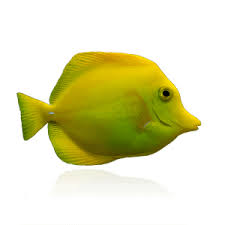The Combination of Dragons and Deities in Chinese History: A Symbolic Union of Power and Protection

Dragons have long been one of the most potent and enduring symbols in Chinese culture. These mythical creatures, known for their majestic and serpentine forms, are often portrayed as divine entities with supernatural powers, capable of controlling the elements, especially water. In Chinese mythology, dragons symbolize imperial power, strength, prosperity, and protection. But the significance of dragons goes far beyond their majestic qualities—they have a deep connection with deities and divine beings in Chinese history. The combination of dragons and gods throughout China’s rich historical and religious landscape has been instrumental in shaping the nation’s beliefs about the cosmos, human existence, and spiritual protection.
This article explores the symbolic and historical relationship between dragons and gods in Chinese mythology, religion, and history. We will delve into key stories and legends where dragons and deities combine, examining their roles in Chinese culture, as well as their profound influence on art, architecture, and spiritual practices.
1. The Dragon as a Divine Symbol in Chinese Culture
Before diving into the specific relationships between dragons and gods, it is essential to understand the cultural and symbolic significance of the dragon in Chinese tradition.
1.1. The Dragon as the Emperor’s Symbol
In ancient China, the dragon was the most prominent symbol of imperial authority. The emperor was often referred to as the “Son of the Dragon,” and the dragon was considered the embodiment of the emperor’s divine mandate to rule. This powerful symbol, typically depicted with five claws, was reserved solely for the emperor and his imperial court, signifying the divine right to rule and his connection to celestial forces.
Throughout Chinese history, the emperor’s relationship with celestial beings, including gods, was believed to be intertwined with the auspicious power of dragons. As the “Son of Heaven,” the emperor’s role was to act as the intermediary between humans and the gods, ensuring harmony between the earth and the heavens. The dragon was regarded as a celestial creature that bridged this connection, serving as a conduit for divine favor and blessings.
1.2. The Role of Dragons in Taoism and Chinese Religion
Dragons also play a key role in the religious traditions of China, especially in Taoism. In Taoist philosophy, dragons are often seen as protectors of the natural world, guiding and overseeing the forces of nature. They are linked to qi (the life force or energy) and yin-yang (the balance between opposites), which are central concepts in Taoism. Dragons are believed to possess the power to bring about prosperity, control the weather, and safeguard the land.
In Taoist temples and shrines, depictions of dragons are often found intertwined with images of deities, suggesting a sacred relationship between the two. As powerful protectors of the cosmic order, dragons are invoked alongside gods to maintain harmony and ensure the well-being of the people.
2. The Combination of Dragons and Gods in Chinese Mythology
2.1. The Dragon King and the Celestial Emperor
One of the most prominent figures in Chinese mythology is the Dragon King, a deity who rules over the seas and controls water. In Chinese tradition, there are four Dragon Kings, each responsible for one of the Four Seas: the East Sea, the South Sea, the West Sea, and the North Sea. These dragon deities are often depicted as powerful beings who have the ability to summon rain, floods, and other natural disasters, as well as protect people from harm.
The Dragon King is closely associated with the Jade Emperor, the ruler of heaven and the highest god in the Taoist pantheon. The Jade Emperor is the one who governs the heavens, the earth, and the underworld, overseeing the deities, spirits, and forces of nature. The relationship between the Dragon King and the Jade Emperor is one of mutual respect and cooperation. The Dragon King’s ability to control water and storms is often seen as a gift from the Jade Emperor, and in return, the Dragon King serves as a protector of the realm.
In some myths, the Dragon King is depicted as offering assistance to the Jade Emperor by taming water-related disasters or providing rain for the crops. In other stories, the Dragon King is portrayed as having a somewhat rebellious nature, challenging the Jade Emperor’s authority, only to be eventually subdued or reconciled. These tales reflect the delicate balance of power between the celestial deities and the natural forces they govern, with dragons acting as both protectors and agents of change.
2.2. The Dragon and the God of War: Guan Yu
The union of dragons and deities can also be found in the realm of warriors and protector gods. Guan Yu, the revered God of War and one of the most prominent figures in Chinese folklore and history, is often associated with dragons in artistic representations. Known for his loyalty, righteousness, and martial prowess, Guan Yu is a cultural icon who is frequently depicted riding a dragon or being accompanied by one in various artworks and statues.
In this context, the dragon symbolizes strength, courage, and divine protection, enhancing Guan Yu’s image as a god who stands for justice and martial honor. Guan Yu’s connection to dragons represents the idea that he is under the protection of the powerful celestial creatures and has divine backing in his quest for righteousness. The combination of Guan Yu’s godly qualities and the dragon’s symbolism as a cosmic protector forms a potent force of good fortune, justice, and warrior strength.
The association between dragons and Guan Yu has deepened over time, as dragons have become an integral part of his iconography. In temples and shrines dedicated to Guan Yu, dragons can often be found carved into the architecture, reinforcing his divine connection and his protection over the faithful.
3. The Dragon and the Gods of Nature
3.1. Dragons and the Deities of Agriculture
In addition to its connection with the heavens and imperial authority, the dragon is also linked to gods of nature and agriculture. In ancient Chinese beliefs, dragons were associated with the forces of water, including rivers, seas, and rain, which were crucial for the agricultural success of the nation.
In many regions of China, dragon worship is closely tied to the cultivation of crops and the fertility of the land. The God of Agriculture, known as Hou Ji, is often depicted with dragons, symbolizing the union between the divine and the natural forces required for successful harvests. Dragons are believed to bring rain, ensuring abundant crops and protecting the land from droughts or floods.
This connection between dragons and agricultural deities highlights the dragon’s role as a protector and provider, a central figure in the ongoing relationship between humanity and nature. In some folk practices, farmers would conduct dragon dances or ceremonies during planting seasons, invoking the dragon to bring favorable weather conditions for crops to flourish.
3.2. The Dragon and the Goddess of the Moon: Chang’e
Another important deity in Chinese mythology is Chang’e, the Goddess of the Moon. While the moon is often seen as a symbol of feminine energy and tranquility, it is also associated with dragons in various mythological tales. In one popular legend, Chang’e and the Jade Rabbit, who lives on the moon, are often depicted alongside dragons, representing the connection between the lunar realm and the celestial forces that govern nature.
In some stories, dragons are believed to guard the moon and the moon goddess, ensuring her protection from harm. The intertwining of dragons with lunar deities emphasizes the unity between natural and cosmic forces, as well as the spiritual connection between the gods and the dragons that serve as their protectors.
4. The Cultural Significance of Dragons and Deities in Chinese Art
The symbolic combination of dragons and deities has been a central theme in Chinese art for centuries. From ancient bronze vessels and jade carvings to temple murals and sculptures, dragons are often depicted in close proximity to gods and celestial beings, emphasizing their divine role in Chinese culture.
In Chinese paintings, dragons are commonly shown interacting with gods or celestial beings, especially in depictions of the Jade Emperor, Dragon Kings, and various other deities. The artistic representations of dragons in these contexts highlight the creatures’ role as divine agents, mediating between the human realm and the supernatural world.
In addition, temple architecture often incorporates both dragons and images of gods to create a harmonious environment of spiritual protection and divine power. Whether in the form of sculptural reliefs, carvings, or murals, the combination of dragons and gods in Chinese religious art has a profound influence on the way people view and interact with the spiritual realm.
5. Conclusion: The Sacred Union of Dragons and Gods
The combination of dragons and deities in Chinese history and mythology is a reflection of the deep cultural and spiritual beliefs that permeate Chinese society. Dragons, as powerful celestial beings, are often associated with the divine, serving as protectors and mediators between humans and gods. The union of dragons and deities in Chinese mythology has created a rich tapestry of stories, legends, and artistic traditions that continue to shape the cultural and spiritual landscape of China to this day. Through their association with gods, dragons represent the balance between natural forces, cosmic order, and divine protection, embodying the values of power, harmony, and prosperity that have defined Chinese civilization for thousands of years.

